 If you’ve done enough research, you’ve probably come by many articles that say “invoice factoring” and “invoice financing”. On the surface they may appear to be the same product but they’re quite different. However, before we get into the differences it should be noted that they do serve the same purpose. Both invoice factoring and invoice financing offer a “liquidity” source for businesses. Meaning, they can us their unpaid invoices as source of immediate cash.
If you’ve done enough research, you’ve probably come by many articles that say “invoice factoring” and “invoice financing”. On the surface they may appear to be the same product but they’re quite different. However, before we get into the differences it should be noted that they do serve the same purpose. Both invoice factoring and invoice financing offer a “liquidity” source for businesses. Meaning, they can us their unpaid invoices as source of immediate cash.
Unpaid Invoices as a Liquidity Source
Invoices (a.k.a. “accounts receivable”, A/R, or simply “receivables”) have a future value in that they represent a future cash receipt from a customer or client. Your business provides services or product, and then “invoices” the client for their payment at a later date. Invoice financing and factoring allow businesses to tap into that future payment today. In this regard, they are the same. As you will learn below however, they are two different products and it’s important that you understand how.
Invoice Financing vs Factoring: Differences
The 30,000 foot view here is that invoice financing is a loan product, whereas invoice factoring is the sale of an asset (receivables) off of your balance sheet. With invoice financing, the invoices are used as “collateral” for a revolving line of credit. The receivables belong to the business owner. However with factoring, the invoices are “sold” to the factoring company; the receivables belong to the factoring company. Here is a high level comparison how both products differ, with a summary of more similarities at the very end.
Invoice Financing – “strings attached”…
- Product: Revolving Line of Credit
- Security: Receivables act as collateral
- Credit Limit: Borrowing base established
- Personal Guarantee: Very likely
- Recourse: To the business and owner
- Rates: APR as low as 5-10%
With invoice financing, the business has access to a revolving line of credit, meaning the money can be drawn and paid back on an as needed basis. A borrowing base is established, and the receivables act as collateral. The borrowing base is essentially the assets available to be leveraged for a business, and then the credit limit is a % of the borrowing base. For example, if the only non-cash assets a company has are $100,000 in receivables, the borrowing base will take into consideration this $100,000, plus other factors, to determine the credit limit the business qualifies for.
Typically, the end number is something less than $100,000 and in rare instances, may be more. Because the line of credit is actually a loan, there is a personal guarantee and interest that amounts to 5-10% per year. Additionally, if things were to go bad, the business would be liable as well so therefore the deal would be “recourse”. Requiring a personal guarantee and recourse to the business is safer for a financing company, because they have more assets to procure in the event something goes wrong (i.e. “strings attached”). Therefore, the APR is much better than with invoice factoring.
Invoice Factoring – “no strings attached”…
- Product: Sale of Receivables
- Security: Receivables act as collateral
- Credit Limit: 80% of receivables balance
- Personal Guarantee: Sometimes
- Recourse: Sometimes to business only
- Rates: Factoring fees 1-3% per month
With invoice factoring, the business receives advances against their unpaid ad revenues of up to 80%. So for example, if a company has $100,000 in receivables, they can get up to $80,000 advanced up to the time the receivables pay. These advances are considered part of the purchase price. The remainder of the purchase price is paid when the receivables are paid. True invoice factoring deals rarely have a personal guarantee associated with them. If you come across an A/R factoring deal with a personal guarantee (or a “confession of judgment” / “cognovit note”) attached to it, be very, very suspicious!
Lastly, most pure receivables factoring deals are non-recourse, meaning the factoring company assumes all of the risk that the receivables won’t pay. However some deals are recourse to the business only, which means the business is liable to make up for any non-payments (but usually, not the owner). Because of the increased risk assumed by the factoring companies with a pure factoring deal, the rates are higher. Many business owners who don’t want to assume the risk of non-payment find that a pure accounts receivable factoring facility is a better fit for them.
In sum, a “pure” A/R factoring facility is 80% advance, non-recourse to the business and no personal guarantee. The mechanics of how it works may be slightly different, but the essence of a factoring facility include (or don’t include) those three items.
Invoice Financing vs Factoring: Other Similarities
Almost all invoice funding deals require a lockbox, UCC acknowledgment/assignment (notification), and release of a reserve.
A/R Factoring Lockbox
You will often hear this term if you are shopping around for liquidity against your invoices. A lockbox is a bank account owned by the financing company that is used to collect receipt of the invoices. Sometimes it is in the name of your business, i.e. if your business and bank account names are “Joe’s Roofing” the lockbox might be “Joe’s Roofing Collections”. Most times however the lockbox remains in the name of the funding company. This method is much safer for financing company because they collect directly from your clients and don’t have to chase you down for the money. Because lockbox deals require your customers to pay a new bank account, they require “notification”.
UCC-9 Notification
Before any type of factoring deal can go through, the factor or bank will require that you send a signed letter of acknowledgment and assignment to each of your customers, with directions on how to pay the factoring company. The acknowledgment / assignment letters are written pursuant to the United Commercial Code, the law in America governing secured transactions of this sort.
The letter basically says, “I sold (or borrowed against) my unpaid invoices that I’ve issued to you, and they now belong to (or are being held as collateral by) someone else, therefore please pay them to the following bank account.” UCC notification may be an issue for some companies who don’t want their clients to know about their financing devices. If that’s a problem you face, you should look for a “non-notification” product when shopping around.
Receivables Reserve Release
When the invoices get paid by your customers into the lockbox, the financing company will be holding some of your money. Think about it – you never received the $100,000 of unpaid invoices with your line of credit or factoring facility. You only received 50-80% of it, or something less than $100,000. So when the invoices get paid, the financing company receives the balance of the purchase price, and releases that to you minus their fee.
On a factoring facility with an 80% advance, here is a quick math breakdown. You receive 80% of $100,000 up front right now ($80,000), and in 30 days when the invoice gets paid, you receive the remaining 20% ($20,000) minus the factoring fee (1-3% per month). So on a deal with a 1% factoring fee, you would pay 1% of $100,000. The factoring company is paying $99,000 for it ($80,000 up front, then $20,000 minus $1,000 = $19,000 later).
Which Is Better For My Business?
It depends on the quality of your deal. If you personally have bad credit, factoring may be your only option. If you can afford to pay 1-3% per month and don’t want to personally guarantee the deal, go with factoring. If you have solid credit / business history, and want a cheap deal, go with an invoice financing. Again, it depends on the quality of your deal and your overall risk tolerance. Do you want strings attached for a cheaper price, or not?
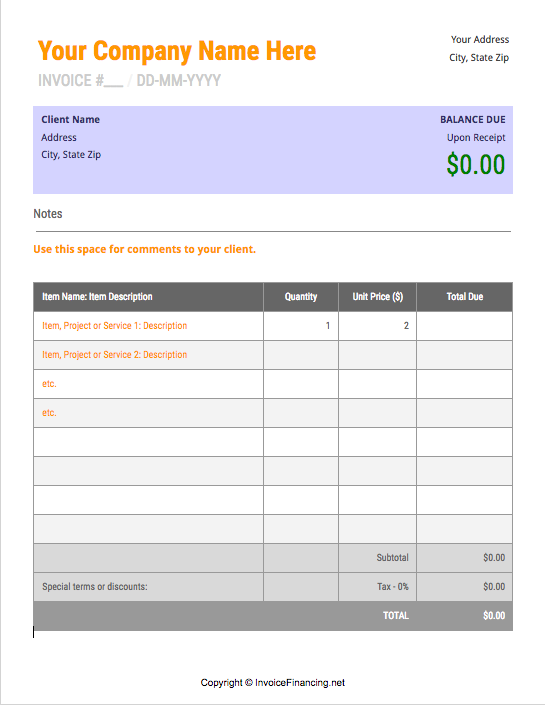
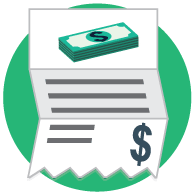 If you’re a small business owner, you’ve probably received a fax, e-mail or phone call about obtaining a “merchant cash advance”. Merchant cash advances are a form of business funding that should, in theory, fall between a loan and an investment. Because it’s not a loan, there is no “interest” associated with it. Instead there is a fixed payback. The fixed payback is often determined by a “factor rate”, which can be deceiving because
If you’re a small business owner, you’ve probably received a fax, e-mail or phone call about obtaining a “merchant cash advance”. Merchant cash advances are a form of business funding that should, in theory, fall between a loan and an investment. Because it’s not a loan, there is no “interest” associated with it. Instead there is a fixed payback. The fixed payback is often determined by a “factor rate”, which can be deceiving because 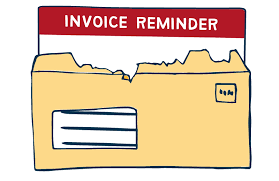 Editor’s note: this article is for new business owners and tailored to those who are starting to earn revenue from clients. This article is very elementary and does not apply to many business owners! But if you’re just ramping up your business and a client says to you, “invoice me”, it’s probably best to act like you know what you’re talking about and agree that you will. But it begs to question if you’re unfamiliar, what is an invoice?
Editor’s note: this article is for new business owners and tailored to those who are starting to earn revenue from clients. This article is very elementary and does not apply to many business owners! But if you’re just ramping up your business and a client says to you, “invoice me”, it’s probably best to act like you know what you’re talking about and agree that you will. But it begs to question if you’re unfamiliar, what is an invoice?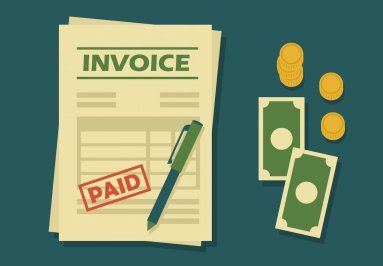 Many people who start a business generally are aware of the fact that there are three main ways to raise capital. The first is so obtain money from an investor. The second is to obtain money from a bank (i.e. a loan), and the third is to do it themselves by investing their own money. However depending on the type of business you have, particularly what kind of customers you have and how you bill them, factoring invoices may be the best suited option.
Many people who start a business generally are aware of the fact that there are three main ways to raise capital. The first is so obtain money from an investor. The second is to obtain money from a bank (i.e. a loan), and the third is to do it themselves by investing their own money. However depending on the type of business you have, particularly what kind of customers you have and how you bill them, factoring invoices may be the best suited option.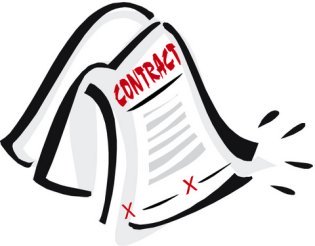 If you’re looking to sell your invoices as a way of raising capital, it’s important to understand the differences between recourse and non-recourse deals. Essentially, recourse factoring means you (or your business) is on the hook if your customers don’t pay the invoices you sold to the factoring company, and non-recourse factoring means you’re not on the hook. Think of non-recourse deals as “no strings attached” financing – the
If you’re looking to sell your invoices as a way of raising capital, it’s important to understand the differences between recourse and non-recourse deals. Essentially, recourse factoring means you (or your business) is on the hook if your customers don’t pay the invoices you sold to the factoring company, and non-recourse factoring means you’re not on the hook. Think of non-recourse deals as “no strings attached” financing – the 


 If you’ve done enough research, you’ve probably come by many articles that say “invoice factoring” and “invoice financing”. On the surface they may appear to be the same product but they’re quite different. However, before we get into the differences it should be noted that they do serve the same purpose. Both invoice factoring and invoice financing offer a “liquidity” source for businesses. Meaning, they can us their unpaid invoices as source of immediate cash.
If you’ve done enough research, you’ve probably come by many articles that say “invoice factoring” and “invoice financing”. On the surface they may appear to be the same product but they’re quite different. However, before we get into the differences it should be noted that they do serve the same purpose. Both invoice factoring and invoice financing offer a “liquidity” source for businesses. Meaning, they can us their unpaid invoices as source of immediate cash.